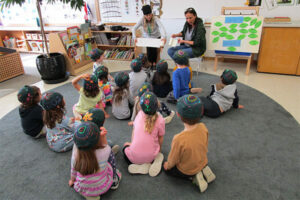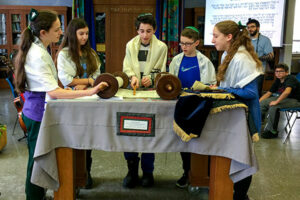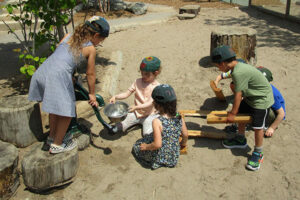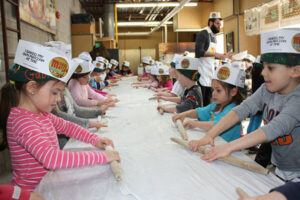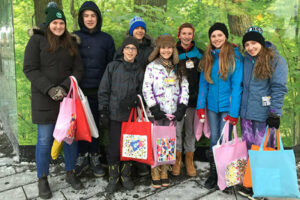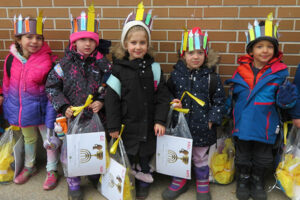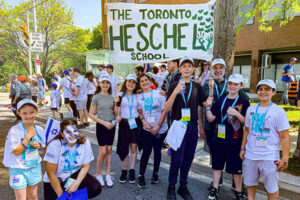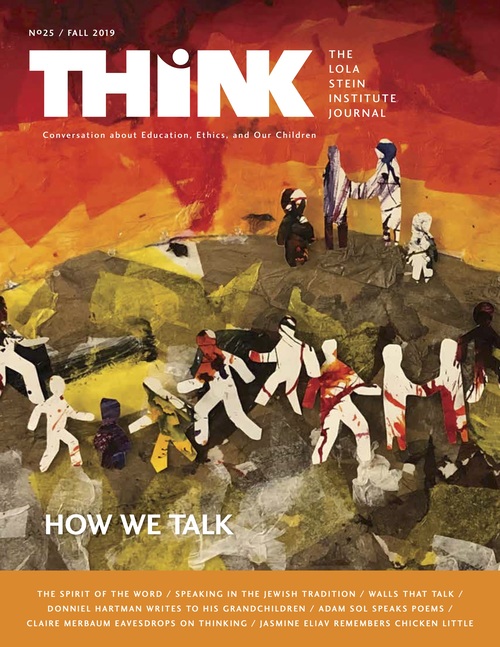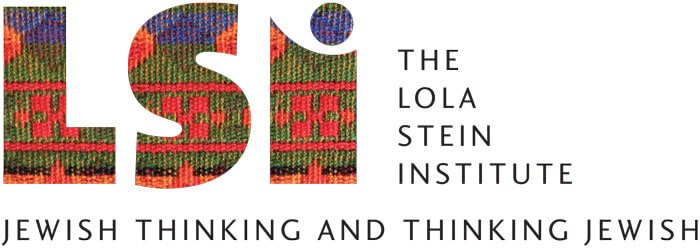- How We Teach

- First Column
- Second Column
- Third Column
- Case Studies

- First Column
- Second Column
- Culture & Community

- First Column
- Second Column
- News & Views

- Admissions

- First Column
- Second Column
- Support Us

- About

- First Column
- Second Column
- Parent Hub
- Attend an Open House
- Take a Tour
- Donate Now
- Calendar
- Blog
- 416-635-1876
- Search
Text-People: Toronto Heschel Teachers and Intentional Language
by
“What we need more than anything else is not text-books but text-people.”
—A.J. Heschel
It seems to me that teachers at The Toronto Heschel School speak differently than teachers at other schools. At least, that’s how I remember it and what I hear from others. For one thing, Heschel teachers pay very close attention to the kinds of words they use.
“The right word definitely makes a difference,” Morah Kathy Schwartz (JK General Studies) told me.
I think “recess” to many people means a free-for-all, but that’s less what we mean in the early years. When we say “outdoor exploration” instead of “recess” we all understand that yes, we are going outside and yes, the children will be playing and it is usually less structured than what we do indoors. But we also understand what we’re doing out there. It’s not a free-for-all: we’re exploring.
By using a different word, the intent and content of the experience is completely reimagined, and this intentionality of language permeates the experience of Heschel for students and teachers.
We know that the Heschel curriculum is adamantly integrated. Lessons are organized not by academic subject but by topic. Over and over again teachers mention the importance of the “generative topic” to the Heschel pedagogy. There are no lessons called history, geography, or social studies; instead there is SES, a deliberately vague and ambiguous acronym. (It stands for Social and Environmental Studies, by the way. Or Science. Maybe it’s Social and Environmental Science?)
“The language we use sets expectations,” says Morah Mika Gang (Grade 3 General Studies). “I think our intention with the term SES is to stop compartmentalizing learning. The messaging we send with our words is that everything is connected and there shouldn’t be these walls between subjects.”
“Language leaks,” Morah Dana Ezer (Grade 8 Civilizations) observes. “In Grade 6 when the students start learning Civilizations, their teacher makes an etymology wall with Greek and Latin roots of important words.” The students learn classical root words like “mono” and “poly,” and explore how they function in religion, geometry, music, and biology. “We really try to speak in patterns,” Morah Dana says.
The patterning of language and a pedagogical technique of repetitive, reiterative, recursive use are important to all the teachers. For example, at Toronto Heschel, Hebrew deliberately is never directly translated into English. Instead, like the first readers of the Rosetta Stone, students decipher the meaning of the language by experiencing different forms of repetition: Kindergarten teachers dramatize their Hebrew speech using their bodies, the two teachers performing the language between them so the children associate certain sounds with particular movements; elementary students draw pictures of Hebrew terms on cards for their Chumash (Bible) studies and invent moves that remind them of the meanings; and Junior High students explore both commonalities among languages and the particularities of each. As they mature, the students appreciate how the same thing may appear in surprisingly different contexts, even as ostensibly unique things show up with many similarities.
The reciprocity between ideas and language develops in myriad ways. When speaking with Morah Mika, she made a remarkable connection between her classroom environment and her own use of language. “Something that is particular to Heschel is the way we are instructed to set up our classroom visually with clean lines, and reducing as much visual noise as possible,” she explains. “And I’ve noticed that this practice has affected my own speech; it has encouraged me to be more concise with my words, to be as clear as possible, and not take up unnecessary space with my language.”
Toronto Heschel teachers do not act as conduits of information, the way I remember conventional teachers do, but as “text-people,” whose actions and speech are essential components of the information that they deliver. The Toronto Heschel curriculum is, in fact, performative; it cannot be wholly understood from books or texts because it is only complete when it is realized through the speech and language of its teachers.
But perhaps the most arresting aspect of the language of Heschel’s curriculum is its clarity. Language is like glass: the clearer it is, the less you notice it. When teachers use such a precise and exact vocabulary, the ironic effect is that the words themselves seem to recede, eclipsed by their meanings; that is, when a speaker is able to explain something so perfectly, the listener only perceives the object being described, not the words used to describe it. So perhaps it is towards its own effacement that the language of Heschel’s curriculum aspires, and ultimately, this might be what A.J. Heschel was thinking when he wrote that we don’t need more text-books. If books obscure and teachers reveal, then text-people urge students to see beyond the teaching and into the knowledge.
Ava Kwinter studied English literature at McGill University, Queen’s University, and the University of Ottawa.
Special Feature
Our Sages Tell Us
Columns
Perspectives
 The Lola Stein Institute (LSI) is a centre of inventive educational thinking and addresses the challenge to re-frame schooling for the exigencies of our times.
The Lola Stein Institute (LSI) is a centre of inventive educational thinking and addresses the challenge to re-frame schooling for the exigencies of our times.

